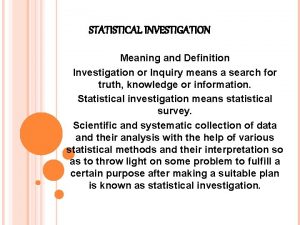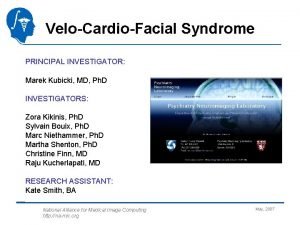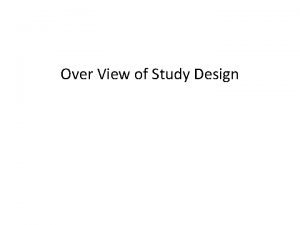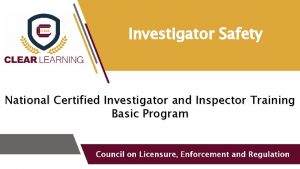3 Experimental Studies Intervention Studies The investigator himself













- Slides: 13

3 - Experimental Studies (Intervention Studies): The investigator himself allocates the exposure then follows subjects for the subsequent development of disease.

3 - Experimental Studies (Intervention Studies): Characteristics:

Types of experimental studies: �Preventive type: �Therapeutic type:

Limitations of experimental studies: Ethical concerns …. .

Limitations of experimental studies: Difficult to find large number of individuals willing to forego a treatment or practice believed to be beneficial for the duration of a trial Cost;

Selection of a study population; The experimental population; Reference population;

MEASURMENTS OF RISK �Realative Risk(RR): �*It is an estimation of the association between exposure and disease.

Incidence rate among exposed RR=---------------------- Incidence rate among non exposed

Interpreting RR of a disease: *If RR= 1 Risk in exposed equal to risk in unexposed (no association). *If RR> 1 Risk in exposed is greater than the risk in unexposed (positive association, possibly causal). *If RR < 1 Risk in exposed is less than the risk in unexposed (negative association, possibly protective)

Attributable Risk (AR): It indicates how much of the disease is attributed to that particular risk factor. . . or the other way round. . . how much those of the non –exposed will develop or get the disease if they are exposed to the risk factor

Example: In a study of two toothpastes, 10 out of 100 caries-free children using a new toothpaste (exposure) develop caries after 1 year. In another group of 100 caries-free children using a standard toothpaste, 25 develop caries

�Example: In a prospective study of the risk of alcohol consumption on developing TB � ---+VE----- -VE --- Total �Alcoholic 40 10 50 �Non-Alcoh 10 90 100 �Total 50 100 150

Example: A study on smoking had shown the followings: -
 Experimental vs nonexperimental research
Experimental vs nonexperimental research Experimental vs non experimental
Experimental vs non experimental Experimental vs non experimental
Experimental vs non experimental Cross-sectional correlational design
Cross-sectional correlational design Disadvantages of experimental research
Disadvantages of experimental research Types of experimental studies
Types of experimental studies Craigslist investigations
Craigslist investigations Dfps special investigator
Dfps special investigator Ahrc postdoctoral fellowship
Ahrc postdoctoral fellowship Invasive species investigator worksheet
Invasive species investigator worksheet Child family investigator
Child family investigator Define statistical investigation
Define statistical investigation Investigator photos
Investigator photos Did investigator assign exposures
Did investigator assign exposures

























